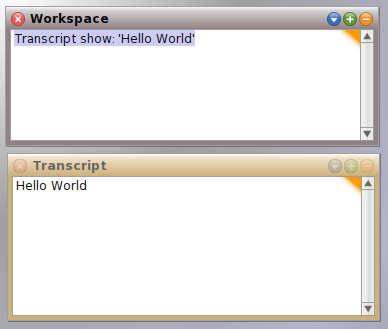
I. History
- 1960 - August 1981
An excellent starting place for learning about the early history of Smalltalk (1960 - August 1981) is "The Early History of Smalltalk" by Alan Kay.
- August 1981 Byte Magazine Smalltalk Issue
Byte Magazine published a special issue in August 1981 that was completely devoted to the Smalltalk-80 Langauge and System. A key article was written by Dan Ingalls and entitled "Design Principles Behind Smalltalk". It provides an overview of the core ideas of Smalltalk. This article is still considered required reading for anyone new to Smalltalk. The cover of Byte Magazine was done by Robert Tinney and is of a multi-colored balloon leaving the ivory tower of Xerox labs.
- 1983 Smalltalk-80 Books Published
Addison Wesley publishes the three Blue, Red and Green Smalltalk-80 books authored by Adele Goldberg, David Robson and Glenn Krasner.
- 1983 Official Release of Smalltalk-80
1983 saw the first publicly available release of Smalltalk known as Smalltalk-80, the definitive release of the language that has set the standard for high level langauge systems since.
- 1984 Apple Release of Smalltalk-80
Apple releases a USD$50.00 version of Smalltalk-80 for the Apple MacIntosh Plus. System requirements are a hard disk drive and one megabyte of RAM. Available working RAM once Smalltalk was loaded was 50 kilobytes, barely enough to use the system.
- Digitalk Smalltalk/V
- .ParcPlace Smalltalk-80/VisualWorks Smalltalk
- .ParcPlace-Digitalk Merger into ObjectShare
- .IBM VisualAge Smalltalk
- Squeak Smalltalk
Squeak Smalltalk project started at Apple by Alan Kay and Dan Ingals. Squeak is based on the Apple Smalltalk-80 system (and presumably license).
- 1983 -> Present, Smalltalk Proliferates, Stablelizes and Proliferates Again!
Since it's Official Release Smalltalk has proliferated and currently has around twenty active versions in distribution and a few in various stages of development. Recently a flood of new versions and variations have surfaced including numerous versions aimed at bringing Smalltalk into the Java universe.
II. Origin of Name
It is “called”Smalltalk”—as in”programming should be a matter of …” [Smalltalk] and “children should program in…” [Smalltalk].The name is also a reaction against the “IndoEuropean god theory” where systems were named Zeus, Odin, and Thor, and hardly did anything.
I figured that “Smalltalk” was so innocuous a label that if it ever did anything nice people would be pleasantly surprised.”
-Alan Kay, The Early History of Smalltalk, section III, Origin of Smalltalk's Name"
III. Description
Smalltalk is an object-oriented, dynamically typed, reflective programming language. Smalltalk was created as the language to underpin the "new world" of computing exemplified by "human–computer symbiosis." It was designed and created in part foreducational use, more so for constructionist learning, at the Learning Research Group (LRG) of Xerox PARC by Alan Kay, Dan Ingalls, Adele Goldberg, Ted Kaehler, Scott Wallace, and others during the 1970s.IV. Language Predecessor
Simula67Lisp
V. Sample Run

COMMENTS:
"Wala akong idea sa SmallTalk." -- Sir JACHermocilla
"Nagamit ko s'ya no'ng MS, pero I can't even remember how to program "Hello World!" in SmallTalk anymore..." --Sir Arian Jacildo
Sources:
http://www.smalltalk.org/smalltalk/history.htmlhttp://www.smalltalk.org/smalltalk/whatissmalltalk.html
Kay, Alan. "The Early History of Smalltalk" . Retrieved 2007-09-13. http://www.smalltalk.org/versions/ANSIStandardSmalltalk.html
http://pupeno.com/2011/07/
CMSC 124 T-8L
Aguila, Kasandra Mae M. 2010-62626
Esclanda, Charmaine Bianca F. 2010-01931
Maranan, Jonathan P. 2010-57000
No comments:
Post a Comment